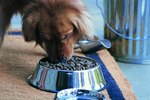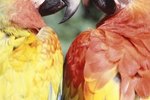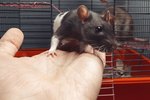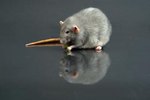
Nutritional needs of rats, like many other less common pets, are often overlooked. Because rats have historically been considered vermin, ideas about their nutrition have, unfortunately, mostly focused on how to poison them, so even the most dedicated rat parent is often confused about what to feed his beloved pet. However, as rats gain popularity as pets and better nutritional information becomes available, keeping your rodent friends happy and healthy is easier than ever.
Reputable Food Lists
Don't assume that because your best friend feeds his rats a particular food with no obvious harm, that it is OK to feed that food to rats. Look for more than one reputable authority to answer your nutrition questions, because not all sources agree. Many rat fan sites and forums, while well-meaning, may contain bad advice. On the subject of radishes, for example, many groups either list radishes as safe -- without comment -- or leave them off entirely. Others, like Perth Rat Rescue and Rehab, list radishes among foods that should only be fed occasionally, because they contain “goitrogens,” substances that can cause enlargement of the thyroid gland, resulting in goiter.
Weighing the Good and the Bad
The mustard family, or brassicas -- of which radishes are a member -- contain a number of chemicals with potent uses. Mustard, rape, kohlrabi, cabbages and radishes are only a few of this large plant family to contain progoitrogens. Mustard seed gives us mustard gas -- a now-banned, lethal component of many of the world's former military arsenals. Rapeseed produces a toxic plant oil called eurucic acid -- until rendered safe by converting it to canola oil through a process of genetic selection. But brassicas also all contain beneficial antioxidant and anticancer properties, so it always makes sense to weigh the good against any potential bad.
Considering the Parts
Many fruits and vegetables contain substances that in large enough quantity, or in a raw state, may cause undesired health effects. Often simply removing those parts of the plant containing the toxin, or cooking it, will render it safe. For example, apples are a safe rat food, but the seeds contain cyanide -- a potent toxin in large amounts. Always remove the toxic parts before feeding similar kinds of foods. For other cautionary foods, including radishes and radish leaves, give only tiny amounts raw. With many legumes, like lima or soy beans, cooking them first makes them safe for your rat.
Conclusions
What to feed your pet may seem confusing to a new pet rat parent, but common sense suggests feeding all foods in small amounts. Rats are not particularly choosey when living in confined quarters where they do not have access to natural variety, and will as happily digest a toy or part of their housing as legitimate food. Most experts, including The Humane Society of the United States, suggest feeding your rat a special rat chow called “lab blocks” to ensure she gets all the necessary nutrients she needs for health. Add small amounts of fresh fruit and vegetables -- including radish leaves, non-fatty table scraps, grains and seeds as treats only, and vary the offerings. Remove leftovers daily to avoid spoilage, which can lead to stomach upset or health concerns.
References
- Perth Rat Rescue and Rehab: Unsafe Foods for Rats
- Organisation for Economic Co-operation and Development: Revised Consensus Document on Compositional Considerations for New Varieties of Low Erucic Acid Rapeseed (Canola): Key Food and Feed Nutrients, Anti-Nutrients and Toxicants
- Nutrition Research and Practice: The Antihypertensive Effect of Ethyl Acetate Extract of Radish Leaves in Spontaneously Hypertensive Rats
- The Humane Society of the United States: Rat Feeding
Resources
Photo Credits
-
David De Lossy/Photodisc/Getty Images




